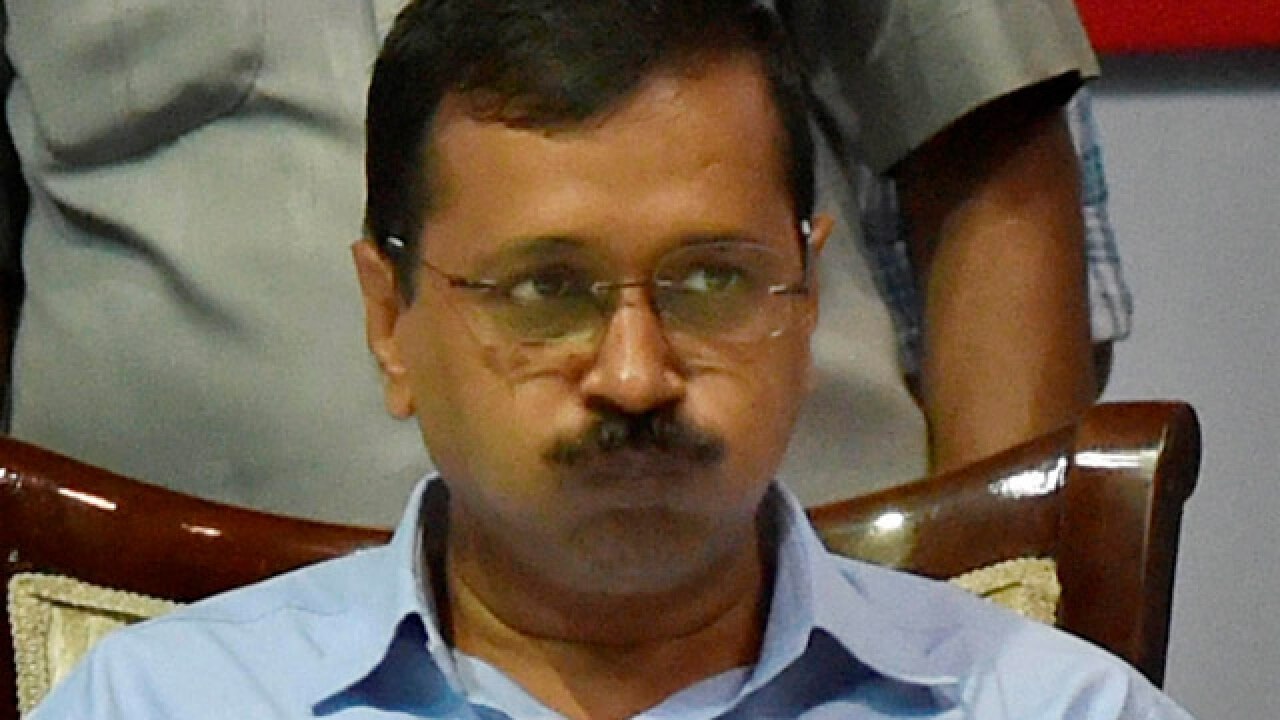
"I see broken Electronic Voting Machines...." Arvind Kejriwal could well star in a political thriller scripted by Manoj Night Shyamalan. His obsession with pointing fingers at others and proclaiming himself as the messiah of Indian politics is beginning to wear thin with the public.
The drubbing at the hands of the Bharatiya Janata Party in the Delhi municipal elections despite ten years of shoddy civic management by the BJP-ruled corporation is a stinging rebuke to Kejriwal's brand of politics. And since then, the chaos within the Aam Aadmi Party has only worsened. The noise against the former anti-corruption crusader’s style of governance has also reached a crescendo.
The AAP has even got a notice from the Income Tax department for suspicious donations. This, after Kapil Mishra, a former minister in Kejriwal's cabinet, levelled serious charges of bribery and corruption against him. In this context, AAP’s EVM stunt in the Delhi Assembly seems a desperate attempt to divert focus away from the internal strife within the party. Kejriwal is yet to give any convincing response to the allegations levelled against him. The issue of Electronic Voting Machines and if they can be tampered with has no clear answers.
EVM rigging is possible, but highly improbable.
In November 1998, Electronic Voting Machines or EVMs were used for the first time in Assembly elections in 16 constituencies across Madhya Pradesh (5), Rajasthan (5) and Delhi (6).
The need for EVMs was felt because of large scale booth capturing, destruction and tampering of ballot papers during elections. EVMs were a safer method to count votes.
Electronic Voting Machines- though they are electronic- are not connected to any network. No network means no ‘net based hacking’.
There are ways to manipulate the tally of votes which are stored on individual chips, but that would require each EVM to be tampered manually using devices and mobile phones.
Considering the huge volume of machines involved, this seems like a task beyond any person or group. More so, an act of this nature involving such numbers is bound to be noticed by the ECI officers.
In fact, on the day of elections, EVMs are tested in the presence of booth agents of all political parties. As soon as EVMs are received in a district election officer’s office, they undergo a First Level Checking or FLCs.
FLCs are carried out by the manufacturing company’s engineers, and are supervised by the DEO; these are done in the presence of representatives of all parties.
During the FLC a mock poll is conducted of up to 1000 votes on any randomly selected EVM and the Control Units are sealed.
If any Control Unit (the one that is with the presiding officer in the booth) is objected to by any party, it is summarily rejected.
Similarly, FLC is done for Ballot Units- the machines used for actual voting- and thereafter both the CUs & BUs are marked FLC Ok and safely stored. Still, to remove any doubts, CUs & BUs are then allotted to various constituencies randomly to prevent any advantage to any one candidate or party.
Representatives of all political parties are present during this exercise to ensure transparency. These representatives then sign off on the serial numbers of the BUs & CUs randomly allotted to various constituencies.
The EVMs are only commissioned after the candidates are finalised for each constituency. Here the candidates themselves or their authorised representatives are present and the returning officer keeps their signatures as witnesses.
Once again, a mock 1000 votes are recorded on the EVMs and each vote is checked and verified.
These mock polls are shown to all the candidates and only after they are satisfied the Bus are sealed.
These sealed EVMs are then stored in strong rooms, which are opened only in the presence of observers and party representatives. After this, the EVMs are dispatched to the polling booths.
On the day of voting, Election Commission guidelines say that a mock poll must be done in front of polling agents who can record votes at random and verify each EVM.
During the poll, polling agents of parties are sitting inside the booth itself, further ensuring that no tampering of EVMs is done by rivals.
What is more, there is a paper record kept of each vote cast and double checked by observers and party representatives. These documents too are stored in strong rooms and are signed off by observers after verification.